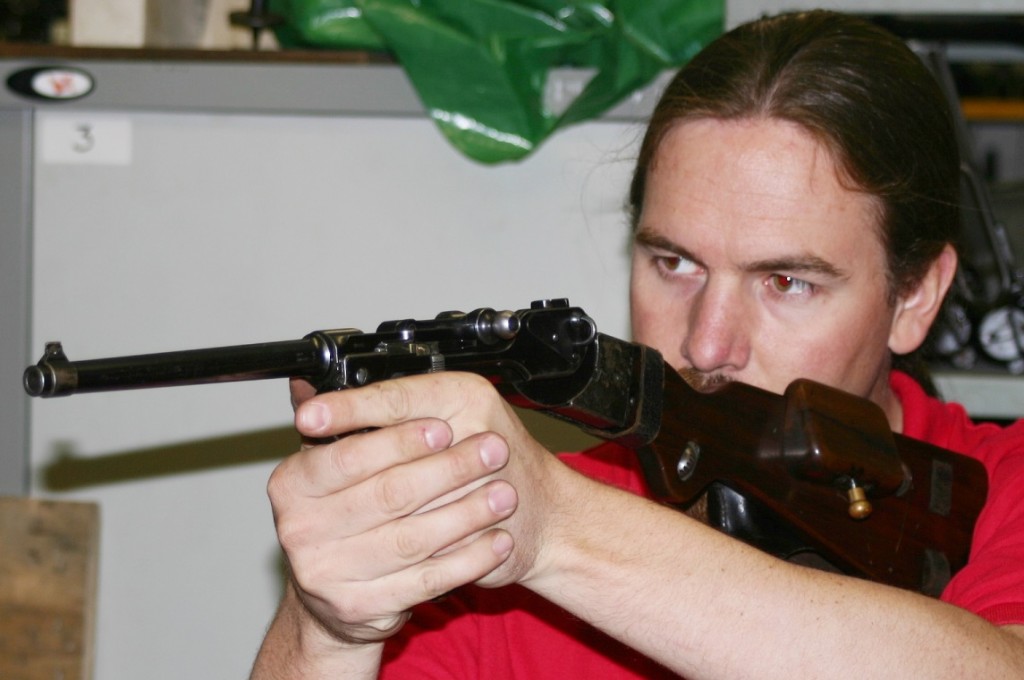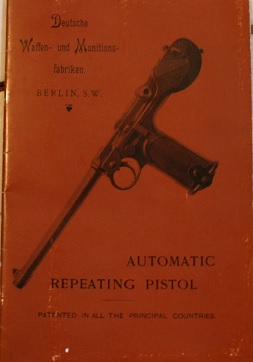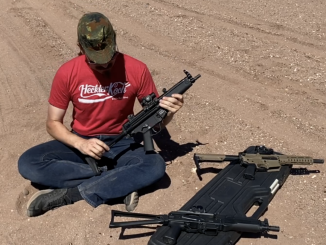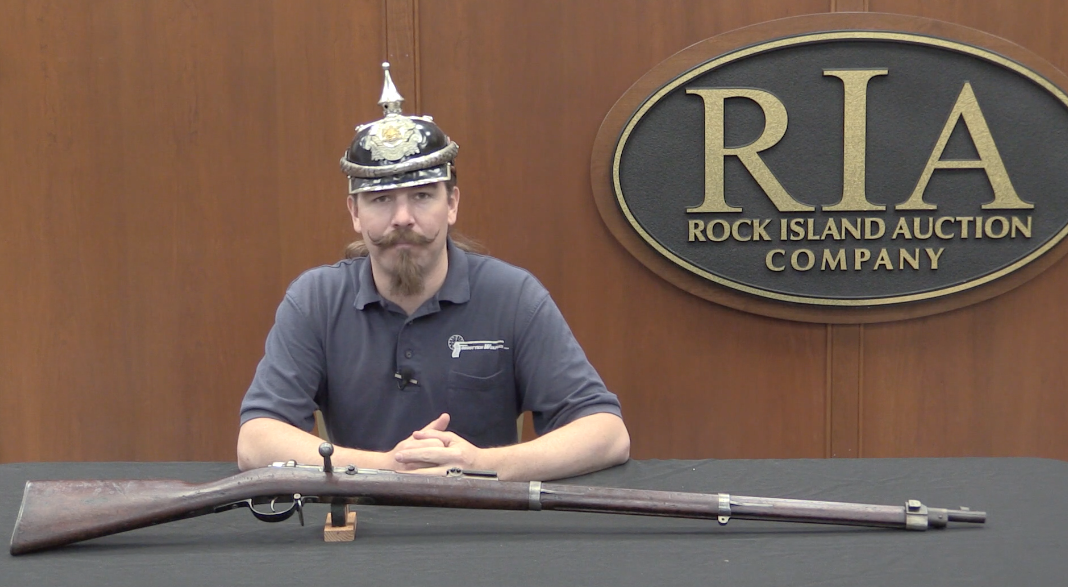The C93 Borchardt was the first truly commercially successful self-loading pistol, and it was the basis for the P08 Luger which would become one of the most iconic pistols in history.

I had the opportunity to handle a couple Borchardts a while back, and the owner also had a copy of the English version of the original manual DWM provided for them. I didn’t have a scanner at the time so I made a photographic copy instead, which you can download in PDF format:

The Borchardt may have been the gun to break open the automatic pistol market, but it wasn’t a particularly practical handgun. Attaching the shoulder stock and using it as a light carbine would definitely have been more effective. If you’re interested in learning more about the Borchardt, you can find this and a couple other manuals (plus a ton of Luger manuals) at Land of Borchardt. They aren’t as large or readily downloadable, though.




It appears that one must grasp the semi-pistol grip of the stock with the right hand and pull the trigger with the left hand… WHO THE HECK DESIGNED THIS STOCK, A MAD SCIENTIST!?!?
Vertical pistol handle of Borchardt is also very much not ergonomic…
Interestingly, 7.65 mm Borchardt and 7.63 mm Mauser are nearly the same, the difference between the two being the powder charge…
I wonder if had been designed to be used left handed, with a sword or the reigns of a horse in the right? many of the earlier shoulder-stocked pistols were designed with cavalry in mind.
Considering that there is a right-handed cheek piece, I think this gun was meant to be used by a right-handed person. The Borchardt was too awkward for any army (US Army in particular) as it was heavy, unergonomic due to its grip, and unbalanced with nasty recoil due to its powerful cartridge. Luger’s work paid off in terms of commercial success though the P.08 pistol was still too delicate and complicated for service at the front lines, where its tight tolerances would make it jam. Many people preferred the Mauser C.96 in service as it was more rugged than the Luger.
My recommendation for arming the cavalry is a Mauser C.96 with a shoulder stock, since bolt-action carbines aren’t too great for skirmishing. If you want it to be cooler, get a M172 Schnellfeuer, used by Chinese troops when they got the chance! Funny enough, the Chinese called all their C.96’s “box cannons” due to the squarish look of the pistols and their stocks, which doubled as holsters.
Mwahahaha! Run fools, run from my full-auto box cannon!
I think the cartridge was the factor that made all the difference. Small caliber, fast and flat shooting with low recoil, and more energy than anything but a howdah pistol. Compare that to the “big guns” of the time, mostly in 44-45 caliber sending lumbering hunks of lead downrange on highly curved trajectories.
Pistols are almost always used at ranges under 50 meters. The “highly curved” trajectories of the .44’s and .45’s were scarcely an issue.
This is indeed phenomenal find – good job. I read someplace recently, how little was left (in relative terms) to ‘convert’ this pistol to its next stage – being P08 Luger. According to story, Mr. Borchardt responded negatively to DWM invitation to continue with its further development; consequently Mr. Luger took on the job.
Does the Borchardt have a toggle catch to keep the toggle down, like the early Lugers with the leaf recoil spring did?
I believe so, if I interpret your question right:
http://www.youtube.com/watch?v=vwXYn-itszU&feature=player_embedded#!
Sorry Denny, I didn’t explain well,
It’s a little spring catch dovetailed into the right hand side of the big joint on the toggle, and it clips into the grip section of the pistol to keep the toggle closed.
during firing, the little catch slides straight back to a cut out in the rails which is aligned so the catch does not restrict the correct movement of the toggle.
One of the suggested links from the vieao you linked to (CAW Borchardt 2) shows the right hand side of the pistol, and it does seem to have the catch.
I was cringing all the way through the vid as the guy clanked pieces of such a rare, valuable and nicely preserved pistol together on what looked like a painted tarmac surface, and at how little care he took with the screw driver…
If the srping is that holding the toggle below dead
point against to rebounding when complete joint
slammed down, it is present at right side and can be
seen at Borchhardt photos.
What Mr. Luger made for Borchardt’s to change into
a handy firearm was;
– To shrink the cartridge into a new dimension,
– To locate the return spring from cumbersome rear
extention to the back of magazine well,
– To change the unlocking cam form and location as
taking from the place where return spring placed and
figuring out at both sides of back top of barrel
extention, therefore terminating the necessity of use
of huge back addition,
– To find a balanced weight between magazine and return
springs to survive the breechbolt positive cycling.
Presenting a brain effort not being smaller between the
differences of Colt and Smith Wesson revolvers.
I eventually took time and looked at manual. One thing which I noticed is, how correct and contemporary is its “gun-English”. I cannot see any difference in comparison to current terminology. Also, worth of to mention are pictorials – they are just splendid; the way it used to be done in old times.